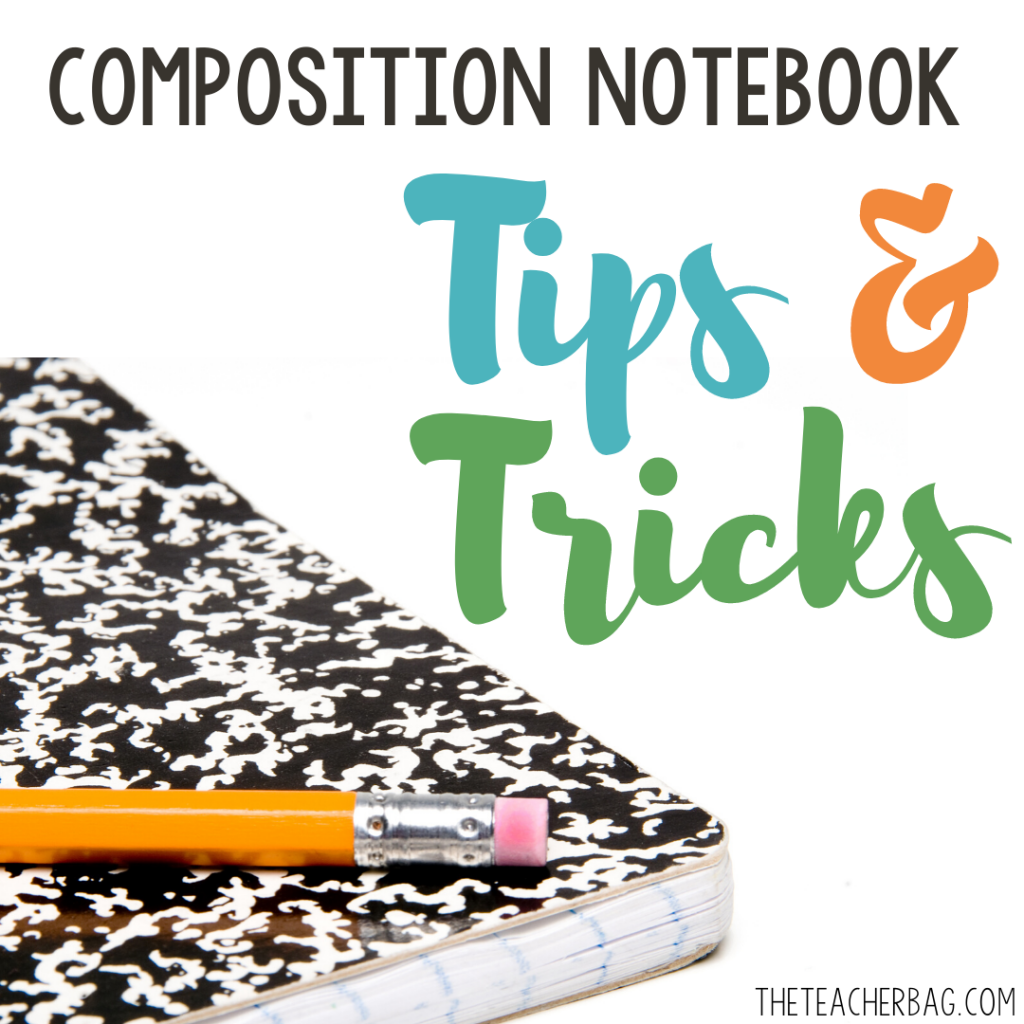7 Tips For Using Composition Books in the Classroom
Composition books are an excellent tool for young learners. They easily fit in student desks and can be used for all subject areas. Over the years, I have learned many fun composition book tips and tricks. Check out these composition notebook hacks you need to know about.


1. Cut the composition book in Half
Often times young learners do not need the full page of a notebook, so if you cut them in half you get more bang for your buck. I am lucky to have a dad who will cut notebooks in half for me. If you do not know someone with the ability to do that, you can bring them to a copy store and they can do it for you for a small fee. I keep these small notebooks at our reading table for reading responses, word work, and guided writing activities.


2. Using Tabs
Tabs can be useful if you use the notebook for multiple subjects. For example, if you are using your composition book for math and word work, tabs can help keep the subjects separated. An easy way to make tabs is to fold a small rectangular piece of cardstock and staple it to a page.


You can also use tabs to separate subjects within subjects. For example, if you had a writing notebook you could have a tab for narrative, informational and persuasive writing.
3. Ribbon Bookmark
When working with a notebook, sometimes it can be hard to find the page you left off on. One way to help with that is to use a bookmark. Regular paper bookmarks can easily be lost. A ribbon bookmark is a great solution to this problem.


The way that I do this is to tape a ribbon to the back of the notebook. I have found that using duct tape works best because it is sturdy and holds the ribbon in place. You can find many fun duct tape designs that make it appealing to young learners.


4. Tape on the Sides
If your students use multiple composition notebooks they can easily mix up which notebook is which. Putting different color tape on the spine of the notebook can help your students know which notebook to easily grab.


5. Inside Pockets
Pockets are great when you have loose papers or mini-books you want to add to your notebook. Adding a pocket page is something that your students can do. First, take a page and fold the top right corner backwards, diagonally. See the picture below.




Next, glue the edges of the backside of the paper you just folded.




Finally, press the glue side down to the next page, behind the folded page. Let it dry and then the pocket page is ready to use.


6. Cut the Inside Pages
Cutting the inside pages is a trick I learned from my son’s second grade teacher. She had cut diagonally, the top right corner of the notebook pages. The pages were cut to different sizes, as you can see in the picture below.


I drew lines so you could see where the pages were cut but you can clearly see the cut pages without the lines.
7. Make them Interactive
If you can make the composition books interactive, you will have more buy-in from your students because they are actively engaged in making their notebooks. You can read more about how we use interactive notebooks in our classroom here.
Do you use composition books in your classroom? How do you use them? Do you have a fun tip to share? Be sure to leave a comment if you do.

I use journals for morning work,and for note taking.